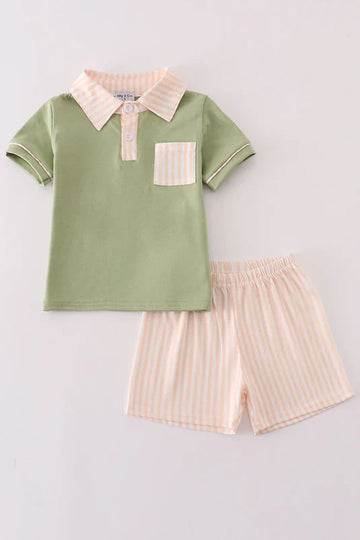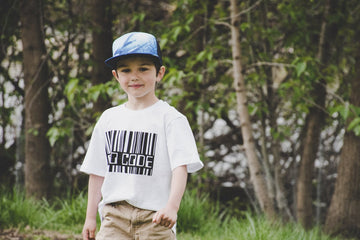Reflecting on the past year can be a meaningful experience for families, especially when kids are involved. Engaging children in this process helps them appreciate their growth and learn to set goals. Creative activities provide a fun and engaging way for families to look back on their experiences, celebrate achievements, and learn from challenges.
Parents can incorporate various artistic methods to make reflection enjoyable. From creating a family scrapbook to sharing stories through art projects, there are many ways to connect through memories. These activities not only strengthen family bonds but also instill valuable lessons in communication and self-awareness.
Involving kids in reflection encourages them to express their thoughts and feelings. By using creative approaches, families can foster a supportive environment where everyone feels heard and valued. This practice lays a foundation for a positive mindset as they move forward into the new year.
Reflective Activities for Different Age Groups
Reflecting on the past year can be an engaging experience for children of all ages. Each age group benefits from activities tailored to their developmental stage, making reflection more meaningful and enjoyable.
Storytelling with Toddlers
Storytelling is an excellent way for toddlers to reflect on their experiences. Parents can encourage kids to talk about memorable moments from the past year. This can include birthdays, family trips, or even everyday events.
Using picture books can help guide this activity. Parents can select books that relate to their own experiences. After reading, they can ask open-ended questions like, “What was your favorite part?” or “What made you happy this year?”
This activity promotes language skills and understanding of personal narrative. Sharing stories builds connections and helps toddlers process their feelings.
Art Projects for Preschoolers
Art projects can be a fun and creative way for preschoolers to express their thoughts about the past year. Activities like creating a “Year in Pictures” collage are particularly engaging. Children can draw or use magazine cutouts to depict memorable events.
Parents can set up a space with crayons, markers, and other craft supplies. As kids create, parents can encourage them to talk about their artwork. Ask questions such as, “What does this picture mean?” or “Which event was the best?”
This not only fosters creativity but also helps them articulate their feelings. The act of creating something tangible can strengthen their memory of the experiences.
Journaling with School-Age Children
Journaling provides school-age children with a structured way to reflect on their past year. It encourages them to think critically about their experiences and how they have grown.
Parents can provide prompts like, “What was the best thing that happened?” or “What challenges did you face?” Children can write or draw their responses in a diary.
Setting aside time each week for journaling can make it a routine. This habit allows them to track their progress and feelings over time. It also cultivates writing skills and self-expression.
Creating a Family Yearbook
A family yearbook is a fun way to capture memories and moments from the past year. It offers a chance for families to reflect on special times together, making it a meaningful project for parents and kids alike.
Compiling Photographs
Gathering photographs is the first step in creating a family yearbook. Start by looking through the camera roll on phones or accessing digital albums.
Focus on important events, vacations, and everyday moments. Families should encourage kids to help select their favorite pictures. This can create a sense of ownership and excitement.
Once the photos are compiled, consider sorting them by month or event. This not only makes the organization easier but also allows for a storytelling approach throughout the year.
Create a list of highlights, such as birthdays, holidays, or trips, to ensure no significant memories are missed.
Adding Personal Stories
Adding personal stories gives the yearbook character. Families can write short descriptions or captions for each photo. This adds context and emotions to the images.
Involve children by having them write about their favorite activities or what they felt during special moments. This encourages creativity and invites them to express their thoughts.
Include anecdotes, like funny incidents or lessons learned. These details will make the yearbook more engaging and memorable. Families might also consider including quotes or snippets from kids about their favorite memories.
Designing Your Yearbook Layout
The layout of the yearbook is crucial for visual appeal. Start with a template, or create a custom design using online tools or software.
Choose a consistent color scheme and font style that complements the family’s personality.
Arrange photos and stories in an easy-to-follow order, ensuring that it flows well. Each page should have enough space for images and text without looking cluttered.
Families can also add decorative elements like borders, stickers, or background patterns. This personal touch enhances the overall look of the yearbook and makes it unique. The final product should feel like a treasured keepsake that everyone can enjoy for years to come.
Time Capsule Crafting
Creating a time capsule is a fun and meaningful way for families to reflect on their past year. This activity allows kids to gather memories and understand the importance of moments that might otherwise be forgotten.
Selecting Time Capsule Items
Choosing items for a time capsule can be an exciting process. Children can pick personal treasures that represent their experiences from the year.
Some ideas include:
- Photographs: Capture moments that tell a story.
- Drawings or Artwork: Reflect their artistic growth.
- Favorite Toys or Books: Represent their interests and hobbies.
- Letters: Notes sharing their thoughts and feelings.
Encourage kids to think deeply about what each item means. These choices will help them remember who they were when they open the capsule in the future.
Writing Letters to the Future
Writing letters is a significant part of creating a time capsule. Kids can express their dreams, worries, and hopes for the future.
Some prompts to consider:
- What do they want to achieve in the next year?
- How do they feel about their current friendships?
- What challenges did they overcome?
The letters can provide a glimpse into their younger selves when they read them later. This can help with personal growth and reflection.
Choosing a Burying Spot
Deciding where to bury or store the time capsule is the final step. Selecting a meaningful location adds to the experience.
Consider:
- A favorite spot in the yard: This could be a tree or garden area.
- Inside the house: A place like a basement or attic can keep the capsule safe.
- A community space: Engage with neighbors for a shared time capsule project.
Ensure the spot is protected from water and temperature changes. Then, mark the location for future digging or reopening. This adventure will spark anticipation and curiosity for years to come.
End-of-Year Interviews
End-of-year interviews can be a fun and meaningful way for kids to reflect on their past year. These discussions allow children to share their thoughts and feelings about experiences, achievements, and dreams. Families can capture these moments in engaging ways.
Crafting Interview Questions
Creating thoughtful interview questions is key to a successful end-of-year interview. Parents can start with open-ended questions to encourage kids to share more.
Here are some suggested questions:
- What was your favorite memory this year?
- What new skill did you learn?
- Who made a big impact on your life?
These questions prompt children to think critically and express themselves. Parents can adapt questions based on their child's age and interests, ensuring that the interview feels personal and relevant. Tailoring questions can lead to deeper conversations and insights.
Recording the Interviews
Recording the interviews helps families save these cherished memories. Parents can use various methods, such as video, audio, or handwritten notes.
Audio and video recordings provide a visual and auditory keepsake. Children can enjoy watching or listening to their reflections later on. Alternatively, taking notes can capture key answers and thoughts for later review.
Parents should choose a comfortable environment for these interviews. A quiet space encourages openness and honesty, making it easier for kids to share.
Preserving Interview Memories
Once the interviews are recorded, preserving them becomes important. Families can create a special scrapbook or digital folder to store recordings and notes.
Using a scrapbook can be a creative project. Children can decorate pages with drawings or photos from the year. For digital storage, organizing files by date makes them easy to access.
Reviewing these memories together as a family can foster connections. It allows kids to see their growth over the years and keeps fond memories alive.
Setting New Year Goals
Setting goals at the start of a new year helps kids focus on their personal growth. It encourages reflection on what they accomplished in the past year and what they wish to achieve in the future. This process teaches them valuable skills like planning and self-discipline.
Guiding Kids to Set Achievable Goals
To help children set goals, it is important to encourage them to think about areas they want to improve. They can start with prompts such as:
- What new skills would they like to learn?
- Are there hobbies they want to explore more deeply?
- How can they improve their friendships or relationships?
It’s best to guide kids to set goals that are SMART: Specific, Measurable, Achievable, Relevant, and Time-bound. For example, instead of saying, “I want to read more,” they can say, “I will read one new book each month.” This clarity makes it easier for kids to stay committed and see progress throughout the year.
Tracking Yearly Progress
Tracking progress is essential for maintaining motivation. Kids can use simple methods to monitor their goals. A goal tracker chart or a bullet journal can be effective tools.
They can create a visual representation of their goals. For example, they can mark off tasks with stickers each time they complete a reading session or practice a hobby.
Regular check-ins, like monthly reviews, can help children understand what is working and what may need adjusting. These reflections also offer opportunities to celebrate small wins along the way.
Celebrating Achievements
Celebrating achievements, no matter how small, is crucial for building confidence. Kids should be encouraged to recognize their efforts and rewards for accomplishing their goals.
Setting up a rewarding system can help. For instance, after completing a specific goal, they might choose a special treat or activity to celebrate.
Parents can also create a family celebration event at the end of the year. This event can highlight all the goals accomplished, making it a meaningful reflection on the year together. This acknowledgment reinforces positive behavior and encourages kids to set new goals for the next year.





